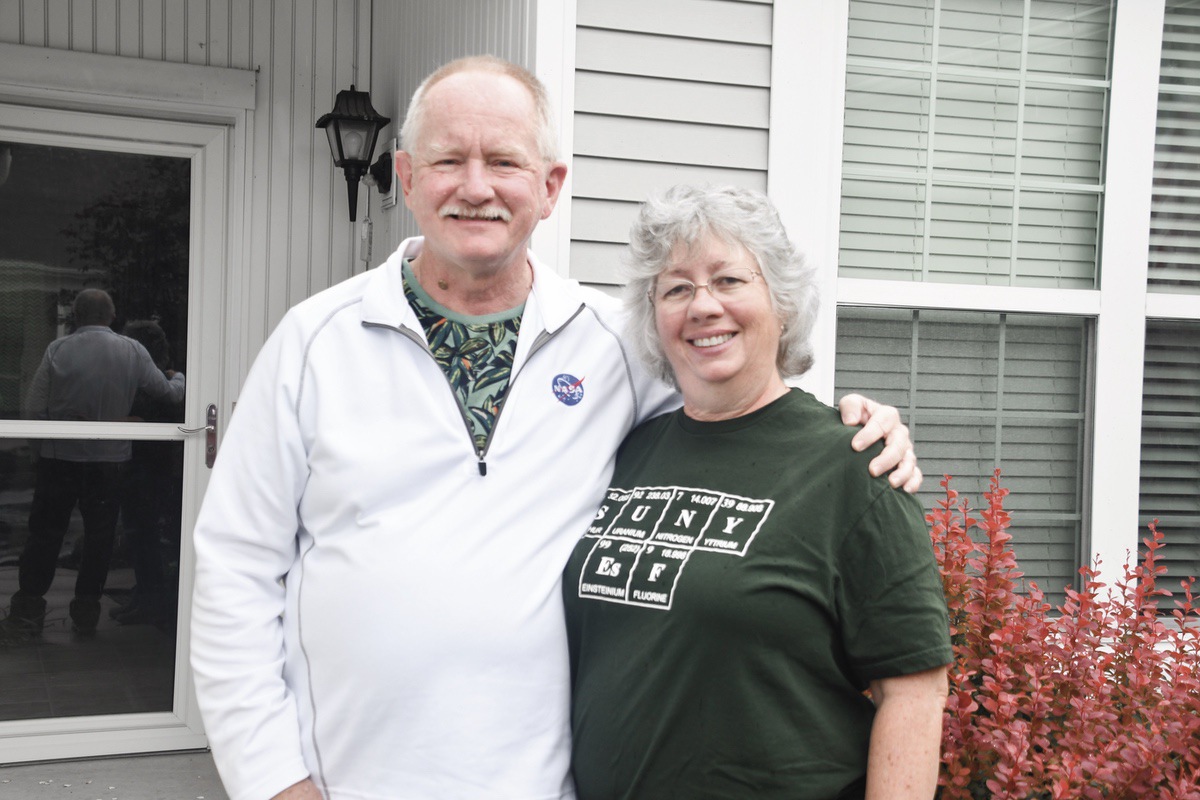SUN CITY — Rich and Kathy Allen, Sun City residents and scientists, are retired health physicists. Health physics is the science of radiation protection. Rich and Kathy devoted their career to protecting people and their environment from potential radiation hazards.
Rich said, “We both started working at Medi+Physics. The company develops, manufactures, and distributes radiopharmaceutical diagnostic imaging agents. The company produced isotopes. One of the uses for isotopes is for imaging. Some have a short shelf life and have to be used the next business day.”
Kathy said, “Later in our careers, we both moved on to work for the Illinois Department of Nuclear Safety. When anyone wants to use radioactive material for medical use, research projects, or as gauges in an industrial setting, they need to obtain a License. In Illinois, there is an agreement between the State and the Nuclear Regulatory Commission (NRC) that allows the State to issue licenses for all uses of radioactive material except for nuclear reactors, (power plants) and military uses.”
While Rich did travel for this work, it wasn’t necessarily luxurious.
“I did a lot of travel for the job, but no place where you would want to go,” he said. “I traveled to nuclear waste dumps in the country. I monitored and tested sites to make sure that they were safe.”
Kathy said, “I was hired to review applications for licenses and issue radioactive materials licenses. I had to review the training and experience of individuals who wanted to handle the material, the locations where the material would be used, and all written safety procedures.”
Rich said, “Governor Thompson made sure that the department was well-funded after the Three Mile Island accident.”
The Three Mile Island reactor in Pennsylvania partially melted down in 1979. This was the most serious nuclear power plant accident in the United States. The radioactive releases had no detectable health effects on plant workers or the public, but the accident brought sweeping changes. It also caused the NRC to tighten and heighten its regulatory oversight.
What other activities were the couple involved in?
Kathy said, “Later, I coordinated the training and procedures for employees participating in Nuclear Power Plant (NPP) Drills. We typically had two or three drills each year. The drill included analyzing data and making decisions about how to best protect the public. We worked with local entities to establish evacuation shelters where we could monitor people for potential radiological contamination and provide temporary shelter. We also worked with the local police, fire, and Red Cross organizations and trained local hospital and EMS personnel.”
The two also played a role in assessing environmental factors.
Rich said, “We deployed Radiological Assessment Field Teams to monitor radiation levels in the environment and take samples of the air, water, and soil. These teams would be able to quickly assess the presence of increased radiation levels in the environment and report that information back to the command center.”
What was the waste material cleanup in West Chicago about?
Rich said, “Some of the residents may recall the contamination of soil in West Chicago. Waste material was created by a processing facility, called the Rare Earths Facility. For more than 25 years starting in the 1930s, low-level radioactive waste was spread throughout the suburb of West Chicago, using the byproducts from the local factory as landfill. We handled the requests to clean up the backyards of more than 110 homes.”
Kathy said, “Some of the homes were on stilts, so much of the dirt was dug out.”
What did they do with the contaminated dirt?
Rich said, “They put the thorium-contaminated in rail cars from West Chicago to a properly licensed hazardous waste facility in the Utah desert.”
What are some other uses of radiation?
“Radiation is used in medicine, industry, and research,” Kathy said. “It offers countless benefits. For example, if you have had any imaging done for your heart or thyroid you probably had some iodine-or thallium tracers.”
“At the Illinois State Fair, we had a booth where we had common items that emit radiation. Smoke detectors, original Fiesta ware, and other products all have some radiation. We had a Geiger counter that we used to detect radiation on items that people had on them, such as luminous-dial watches” Rich said.
While they aren’t working in the field full time, the couple still shares an interest in radiation protection.
Kathy said, “After 25 years of working for the state, I retired. We also have a home in Sun City in Georgetown, Texas. I joined the Emergency Management Committee and I am currently responsible for training emergency coordinators for about 95 neighborhoods in the Georgetown Sun City. For the last two years, I have run emergency response drills for the entire community. including participation by Georgetown Fire and Police and County Emergency Management personnel. I also updated the emergency plan for the community to comply with national standards.”
The Allens want to reassure readers that the outlook is positive for Illinoisians.
Rich said, “Residents should know that Illinois is the best state in terms of oversight and in monitoring nuclear power plants and their surrounding environment.”





